
Macronutrients: What They Are, Types, and How They Influence Athletic Performance
Learn all about macronutrients: their roles, types, and the importance of nutrient timing for sports performance. Read our complete guide for athletes.

A famous sage (me) once said: "In Calisthenics the master is not the one who does thousands of different exercises, but the one who has perfected the same exercises thousands of times."
What I mean by this is that even the most basic and apparently simple exercises can be perfected to unsuspected points and even those who have been training for years, can continue to find small technical changes that make the push-ups, pull-ups, dips to have an increasingly strict form.
It is curious to see how after years of training an exercise, you realize a small detail that suddenly significantly improves your execution of it, usually accompanied by improvements in the recruitment of the main muscles and in the safety of the joints involved.
In this article we are going to review basic Calisthenics exercises and we are going to see what are the main errors and technical details that must be taken into account in order to perform at least correct, if not excellent form in them.
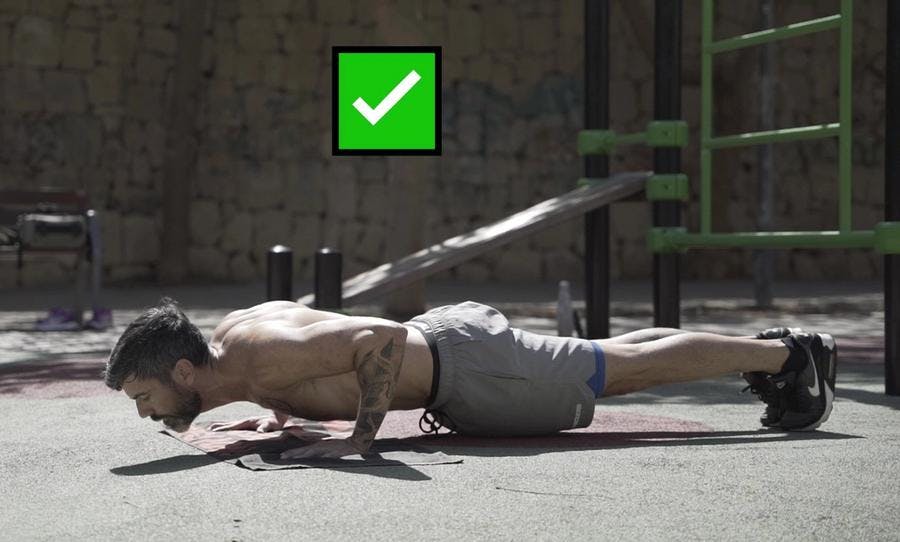
One of the basic concepts in push-ups is that the body must be straight, the legs and the back must form a straight line. And it is important to emphasize that this must be the case throughout the movement.
One of the problems that I see in beginners in push-ups is that when they go up they leave the hips down and what goes up is the upper body. To avoid this you must be focused on correcting it, keeping the tension in your abdominals and actively noticing that your back does not arch.
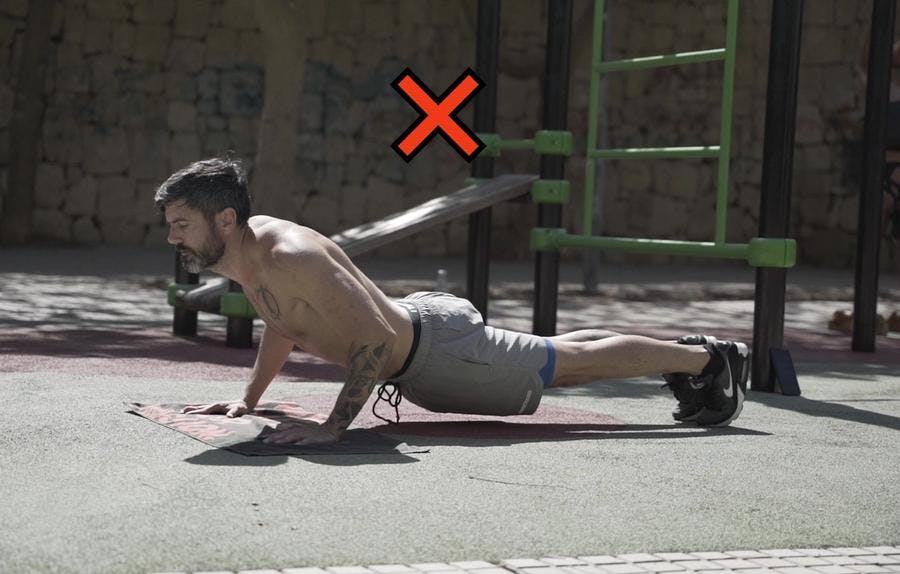
Another key point is the position of the elbows, normally they should not be too close to the body, nor fully open to the sides. These positions do not have to be wrong by themselves, but the standard or neutral position is with the elbows at about 45º.
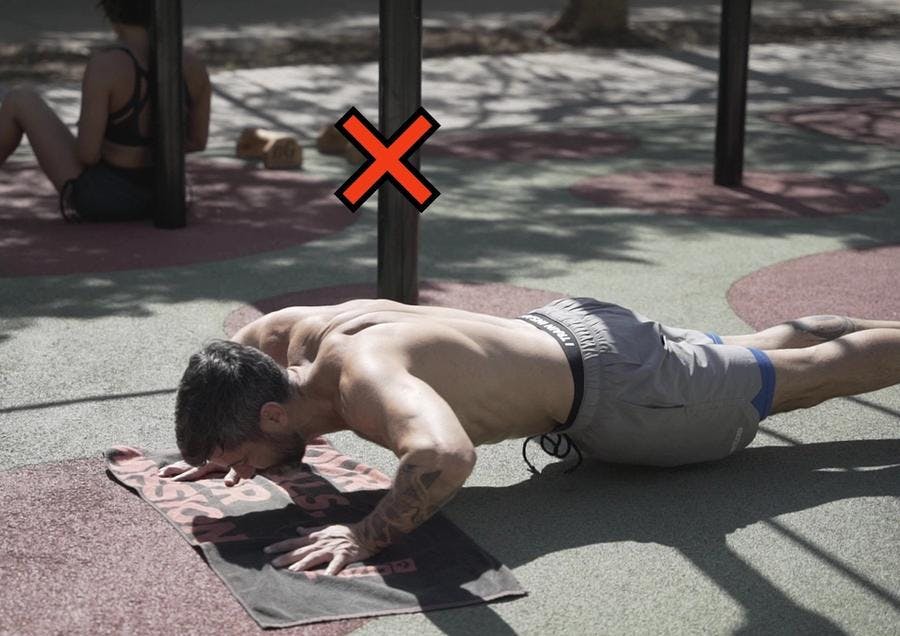
To make sure that you can do this position comfortably, you must make sure that your body is not excessively leaning forward or backwards. To do this, you can first kneel in and from there extend one leg at a time.
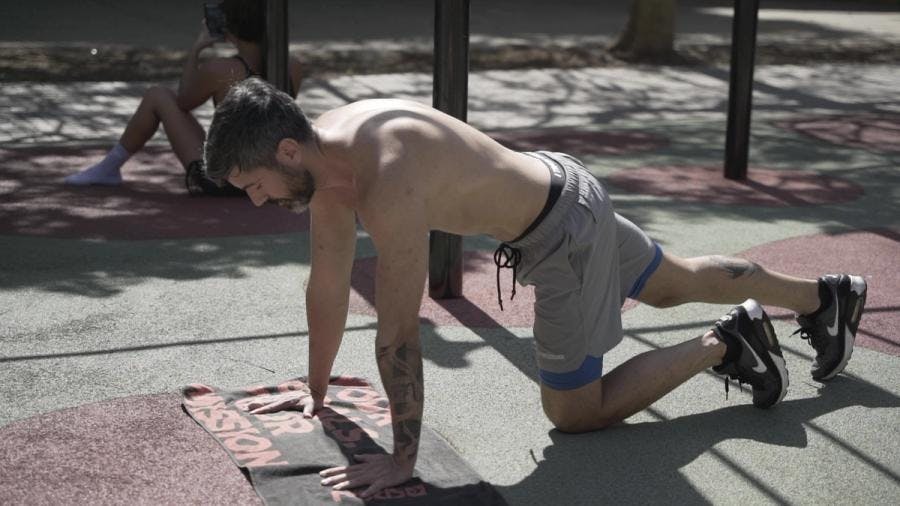
Of course remember to do full range of motion, locking elbows when extending your arms and exceeding 90º when you flex them.
And finally we have the issue of the neck, do not let the neck fall to the ground because this, apart from being harmful, limits your range of movement and will make you falsely think that you are doing full range of motion.
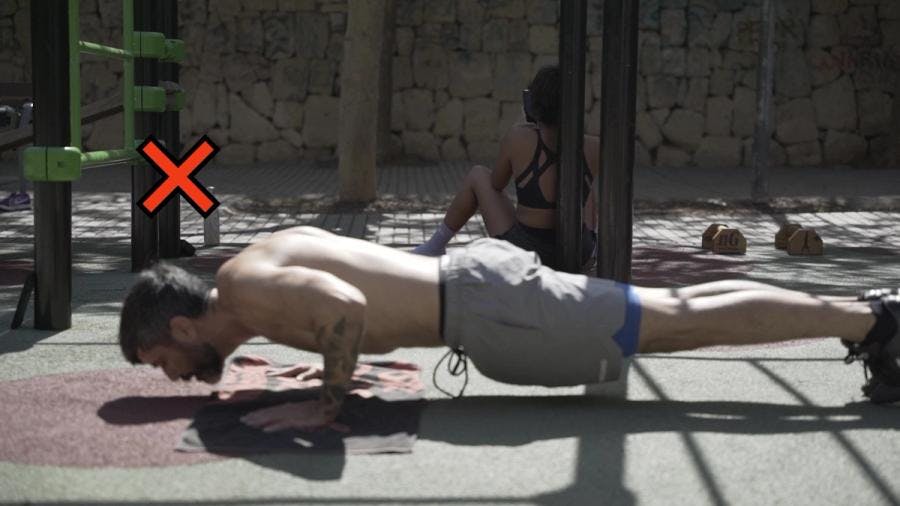
In pull-ups there are different patterns and positions that can be correct depending on the goal we have in mind. But there are other factors we should always keep in mind.
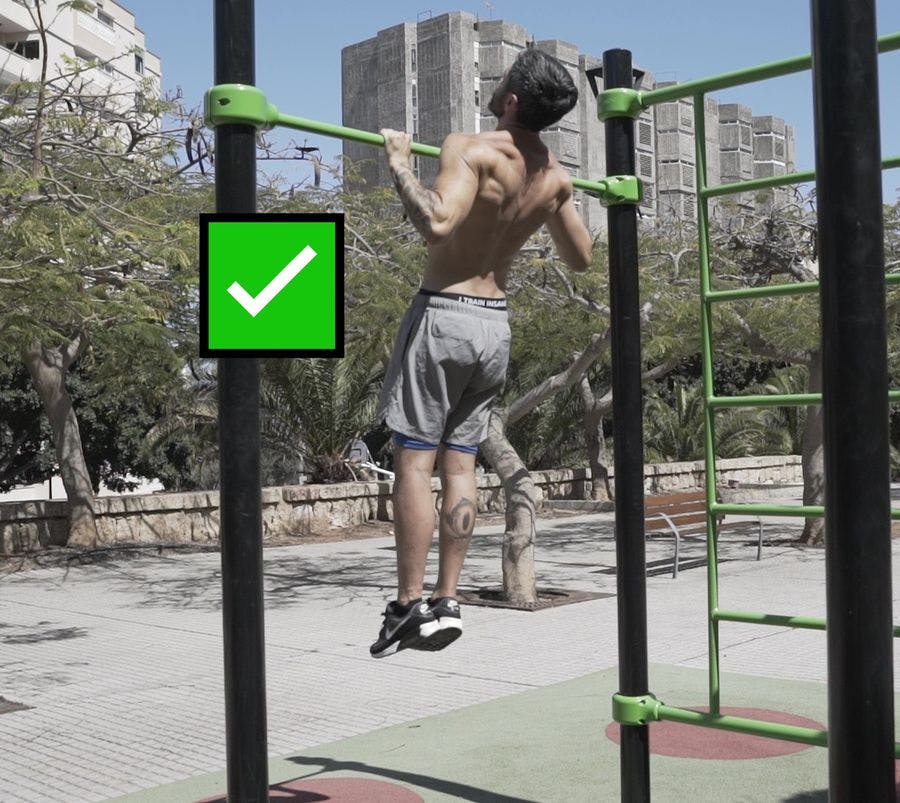
For example, the legs, try to always have them fully extended, without bending the knees, and that they do not go forward when you raise the pull-up. The latter can be difficult, especially when we are tired fighting the last repetitions. But if we want them to be 100% strict and well done, they must be like that.
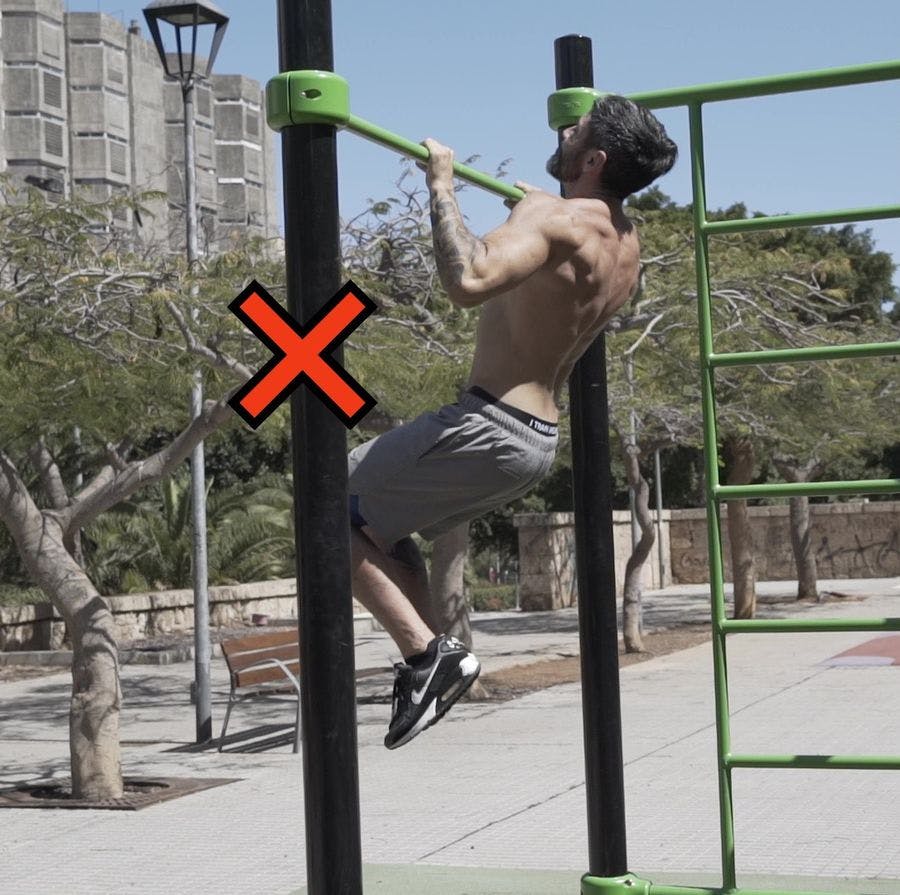
Then there is the issue of whether we want to do them with the chest out, with greater scapular retraction or if we want to do them with the shoulders forward. Each one of these variants has its uses and none is wrong, but, in my opinion, the chest-out ones look much more strict and aesthetic. The key is sticking out the chest without putting the head forward. This variant works more on the musculature of the upper part of the back, with the benefits that this entails.
If you do them with forward shoulders, do it with a specific goal in mind. For example to isolate the lats more or to serve as a progression to other more advanced movements. But also try not to have a sudden neck movement forward at the end of the pull up part.
Of course remember to look for the full range, fully extending the elbows and exceeding the height of the bar at least with the chin without excessively extending the neck.
And finally try to keep a rhythm and cadence of repetitions with which you avoid swinging.
The same thing happens with the dips as with the push-ups in terms of the position of the elbows: the neutral position should not be excessively close to the body, nor excessively open.
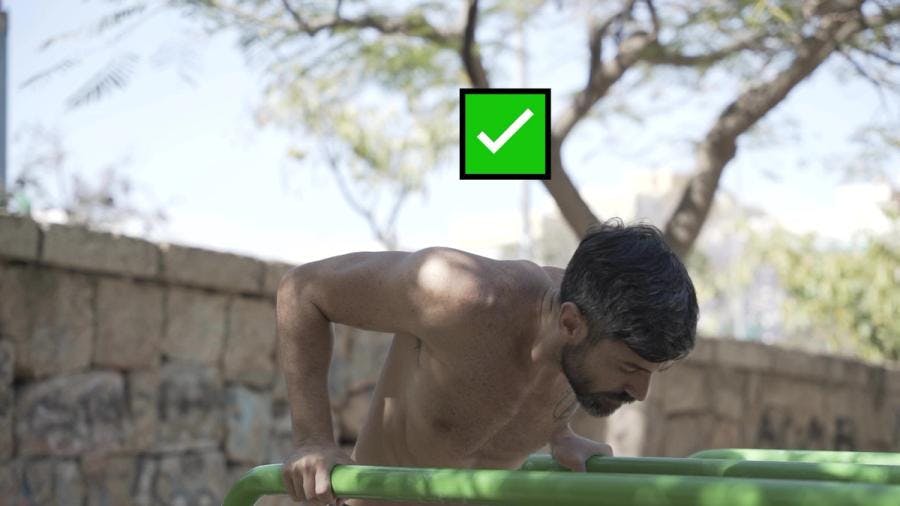
Regarding the body leaning, some people seem to think that by keeping the torso completely vertical they are making the dips more strict, but this is not really the case. There should be a slight incline so that the movement is more natural.
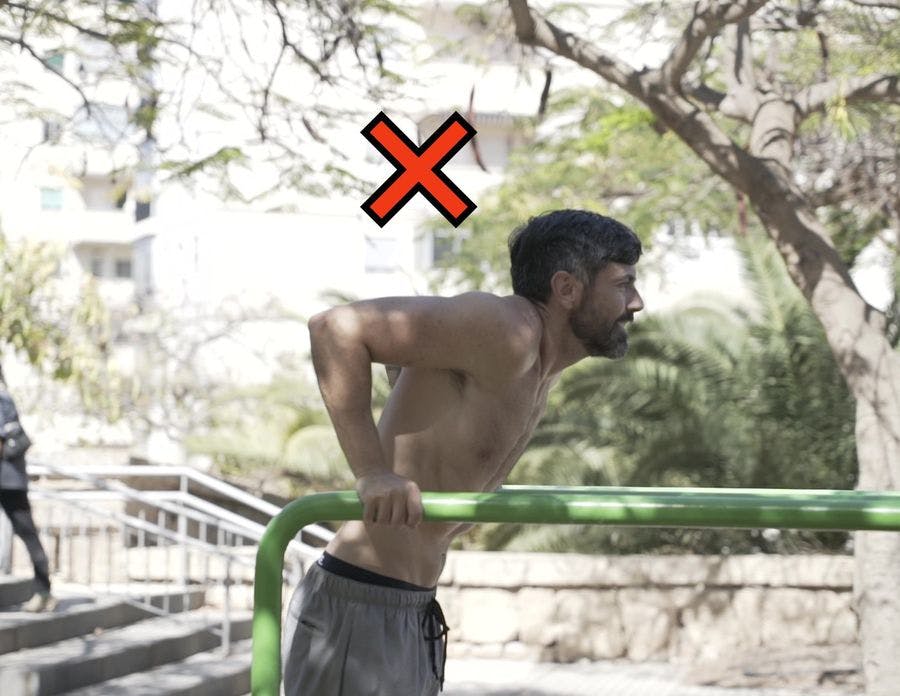
Try not to excessively flex the hip as this tricks the movement.
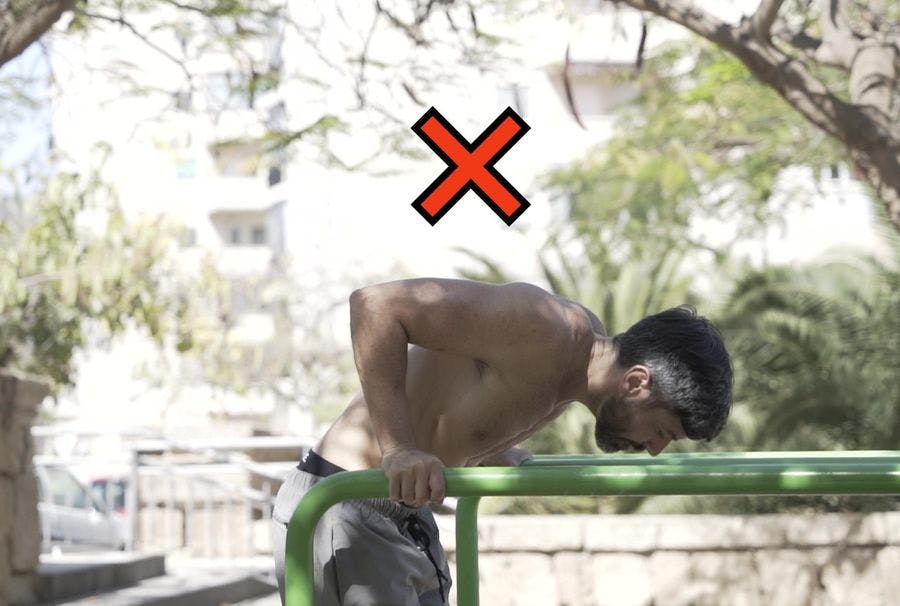
Use a cadence of movement that allows you to avoid swinging and try to keep your neck in a neutral position, slightly flexed, not excessively flexed, nor extended. You also have to be careful not to extend your neck when you are coming to failure on the last few reps.
And again try for the full range of motion by extending elbows and exceeding 90º when flexing.
With regard to the bar dips, I just want to remind you, as I have done before, that you can do a full range. You simply have to lean your body forward to allow the bar to reach your chest area.
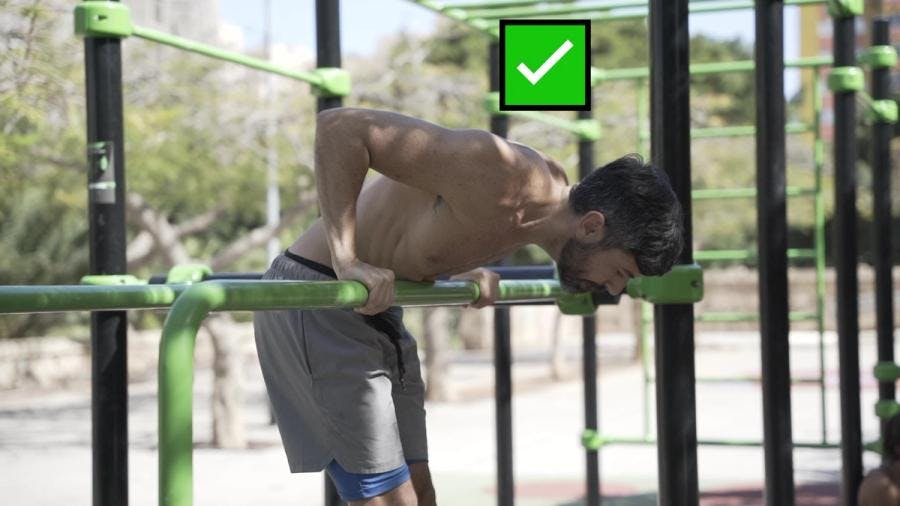
One thing to keep in mind is that if you want to work the rectus abdominis, you don't need to have your feet strapped down or anchored anywhere, as this would only work the hip flexors.
That being said, when you perform crunches the main thing is that the trunk flexion is effective and that it does not involve a flexion of the neck to avoid problems.

Try to keep your head in a neutral or slightly flexed position with your arms and hands as you like but never holding your head.
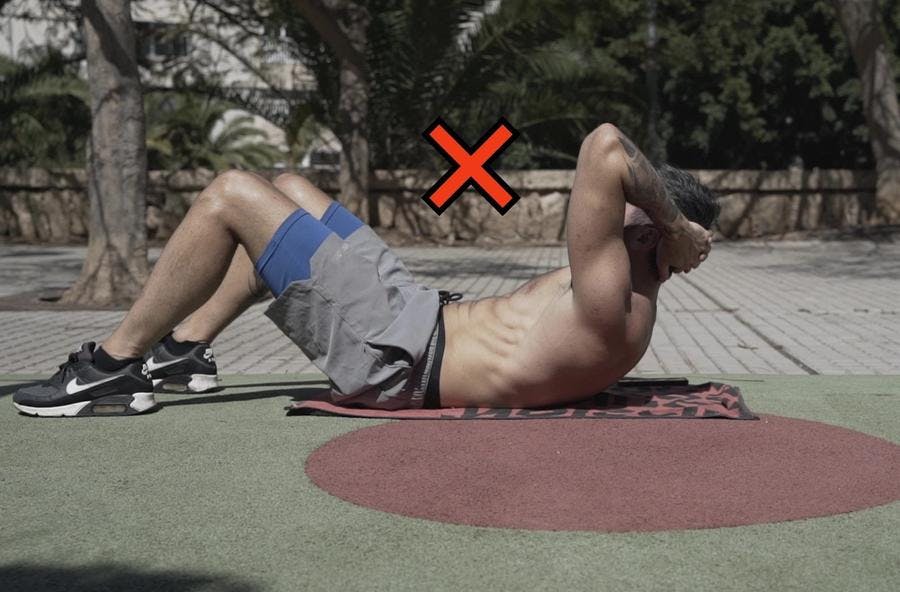
Try to raise the upper back as much as possible without using momentum or inertia.
You can do them with your knees bent or with your legs extended, both of which I consider to be correct, but if you do them with your knees bent, you should be careful not to push excessively with your legs.
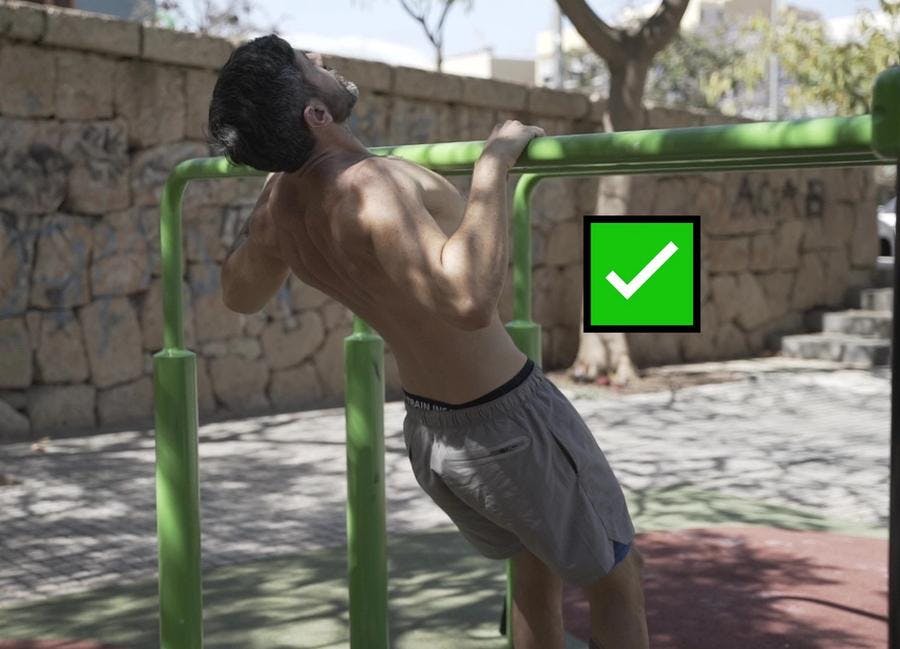
The positioning of the elbows is neutral, neither too open nor too closed, although these positions can be somewhat useful, depending on our goal with the exercise.
Take care to keep the neck in a neutral position and not flex or extend the hip, maintaining a straight line between thighs and back
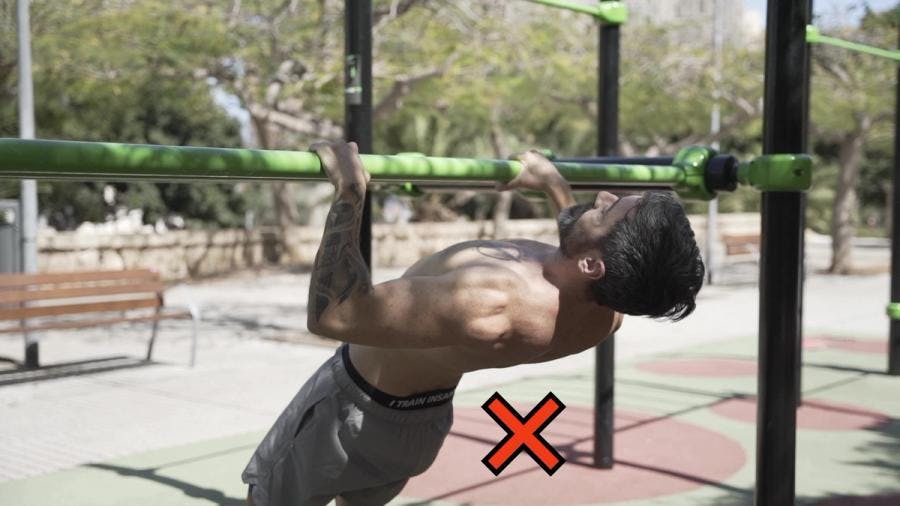
One of the most important factors for the execution of squats, and that is not usually taken into account, is the morphology of the person who executes them.
Depending on the length of the legs in general, the length of the legs compared to the trunk and the length of the femur compared to the tibia, even depending on the morphology of the union of the femur with the hip, the execution of the squat and the appearance of it will be totally different.
To explain it briefly, we can simplify by saying that people with short legs are able to squat with their feet very close together and without their hips going backwards, being able to keep their torso practically vertical during the movement.
However, long-legged people, if they try to squat with their feet together, will find their hips pushed all the way back and therefore have to compensate by leaning their torso forward.
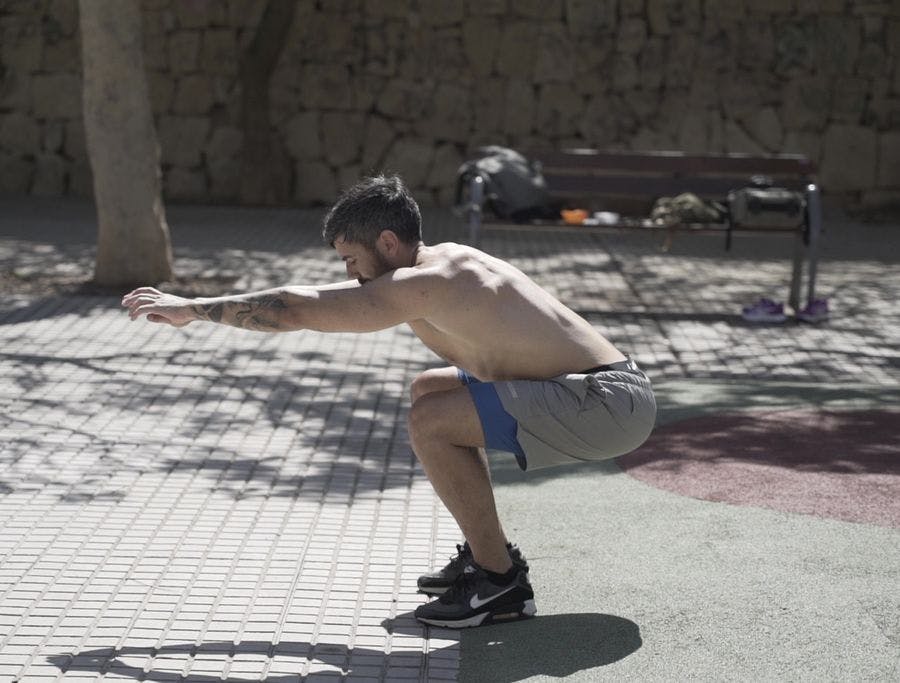
It must be said that ankle mobility also plays a role in this matter, but even so, the issue of morphology is decisive.
That said, strict execution of the squat means not leaning your torso forward too much, so long-legged people will need to place their feet wide apart and pointed out.

Also, exceed 90º on the descent, but without reaching the point that the pelvis makes a retroversion. This can be worked on actively by focusing on activating the lower back at that point of maximum flexion.
With this you have all the basic parameters to ensure that you perform the main exercises in Calisthenics correctly, especially at the beginner and intermediate level. If you want to see examples of routines in which to use these exercises, take a look at our routines section.

Yerai Alonso
Cofundador de Calisteniapp, referente en calistenia y el street workout en Español. Con más de una década de experiencia, es creador de uno de los canales de YouTube más influyentes del sector. Autor del libro La calle es tu gimnasio, campeón de Canarias y jurado en competiciones nacionales e internacionales.
Join our newsletter
Learn everything you need to know about calisthenics

Learn all about macronutrients: their roles, types, and the importance of nutrient timing for sports performance. Read our complete guide for athletes.

Not sure what to eat before training calisthenics? In this article, we explain the ideal pre-workout nutrition based on your specific type of training session.
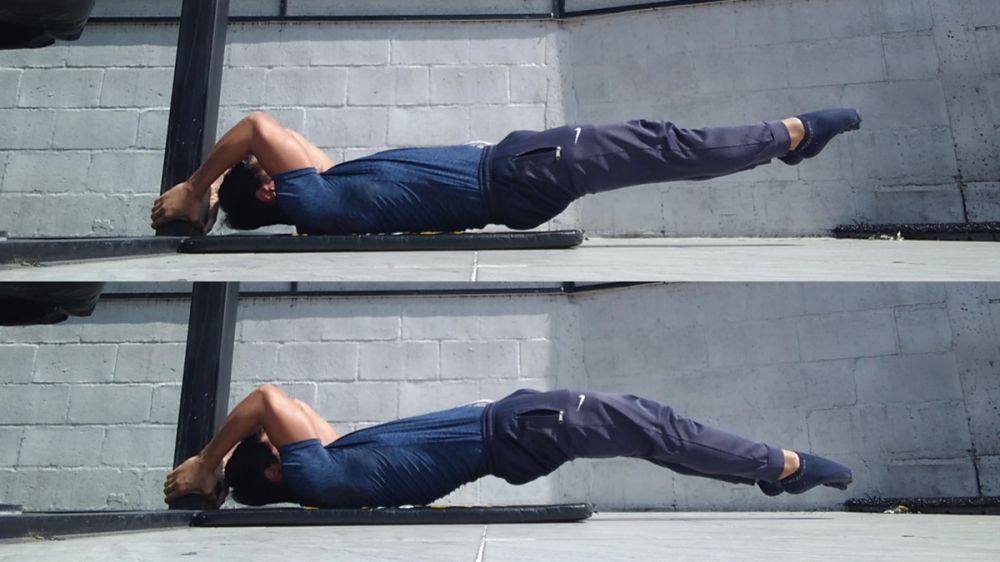
If you want to know everything about how to make dragon flags, here's a complete guide geared towards real progressions.
